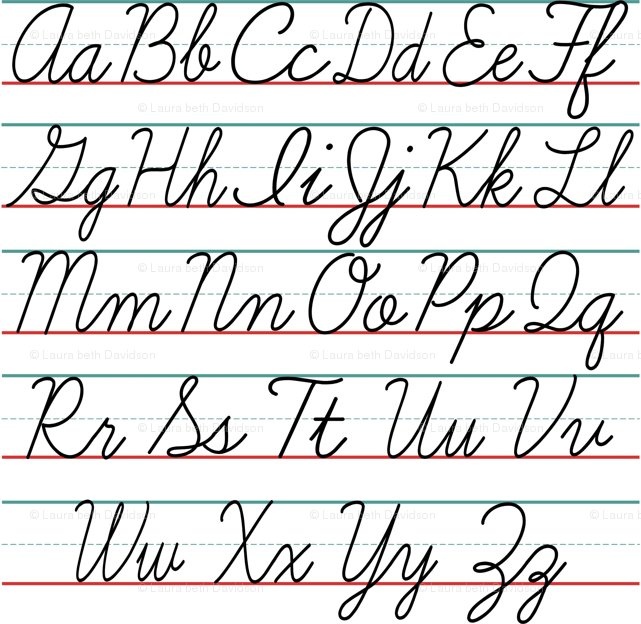NEW YORK – Cursive is on the comeback.
The New York City public school system is encouraging teachers to instruct students in the traditional writing style after drifting away from a focus on cursive in recent years. Alabama and Louisiana also passed laws last year mandating cursive proficiency, adding to a dozen states that already require students to learn to connect their letters, the Associated Press reports.
MORE NEWS: Know These Before Moving From Cyprus To The UK
 New York state Assemblywoman Nicole Malliotakis told the news service she didn’t realize students what students were missing out on until she came across an 18-year-old who printed out his name on a voter registration card.
New York state Assemblywoman Nicole Malliotakis told the news service she didn’t realize students what students were missing out on until she came across an 18-year-old who printed out his name on a voter registration card.
“I said to him, ‘No, you have to sign here,’” Malliotakis said. “And he said, ‘That is my signature. I never learned script.’”
The Republican lawmakers reported the issue to city education officials, who distributed a handbook last fall to encourage principals to bring back lessons on cursive. The document spelled out how mastering cursive can lead to other learning benefits, and Malliotakis believes students’ ability to read historical documents is among the most important.
“If an American student cannot read the Declaration of Independence, that is sad,” she said.
“It’s definitely not necessary but I think it’s, like, cool to have it,” Stuyvesant High School senior Emily Ma told the AP.
The declining popularity of teaching cursive is tied in part to Common Core national education standards that make to specific mention of handwriting skills, and focus mostly on ensuring students can type or print. The Common Core standards were implemented by state officials across the nation as part of President Obama’s Race to the Top education initive that bribed states with a shot at additional education funding in exchange for adopting the rules and other changes.
MORE NEWS: How to prepare for face-to-face classes
Now, lawmakers in states like Ohio are considering legislation to bring back cursive for a variety of reasons, despite opposition from state and national teachers unions.
Ohio state Reps. Andrew Brenner and Marilyn Slaby introduced House Bill 58 last month to “ensure that students develop the ability to print letters and words legibly by third grade and to create readable documents using legible cursive handwriting by the end of fifth grade,” according to the legislation, cited by The Plain Dealer.
Slaby, a former elementary teacher, told the news site cursive handwriting helps reinforce reading skills and engage students in what they’re doing. She also pointed to students’ ability to read historical documents as a critical skill.
“All of those would be of no use if (students) couldn’t read handwriting,” she said. “If they can’t write, they can’t read it.”
The Plain Dealer reports:
Neither the Ohio Education Association or Ohio Federation of Teachers, the two large teachers unions in the state, could point to any districts in 2015 that teach cursive, with both saying it is less important in a keyboard-based world.
The Cleveland school district also does not teach cursive.
“CMSD does not include cursive in our current curriculum,” district spokesperson Roseann Canfora told The Plain Dealer in 2015. “Preparing our students for success in 21st century college and careers requires teaching them computer and typing skills rather than penmanship.”
She added: “Cursive’s use and relevance at school and at work is likely to continue to decline with the increase in use of laptops, tablets and cell phones.”
Regardless, the news site pointed out that state education officials are promoting cursive because “studies and research have shown that instruction in cursive writing develops fine motor skills and improve literacy.”
Idaho and North Carolina passed laws mandating cursive instruction in 2013, Tennessee and South Carolina followed the same path in 2014, and Arkansas passed legislation requiring cursive this year. All cited the benefits hand writing in connected loops, curls and swooshes has on student learning.
Plus, students seem to like it.
P.S. 166 third grader Norzim Lama told the AP he enjoys writing in cursive “cause it looks fancy,” while classmate Camille Santos thinks it’s “actually like doodling a little bit.”
“It’s really fascinating way to write,” fellow third-grader Araceli Lazaro said, “and I really think that everybody should learn about writing in script.”


Join the Discussion
Comments are currently closed.